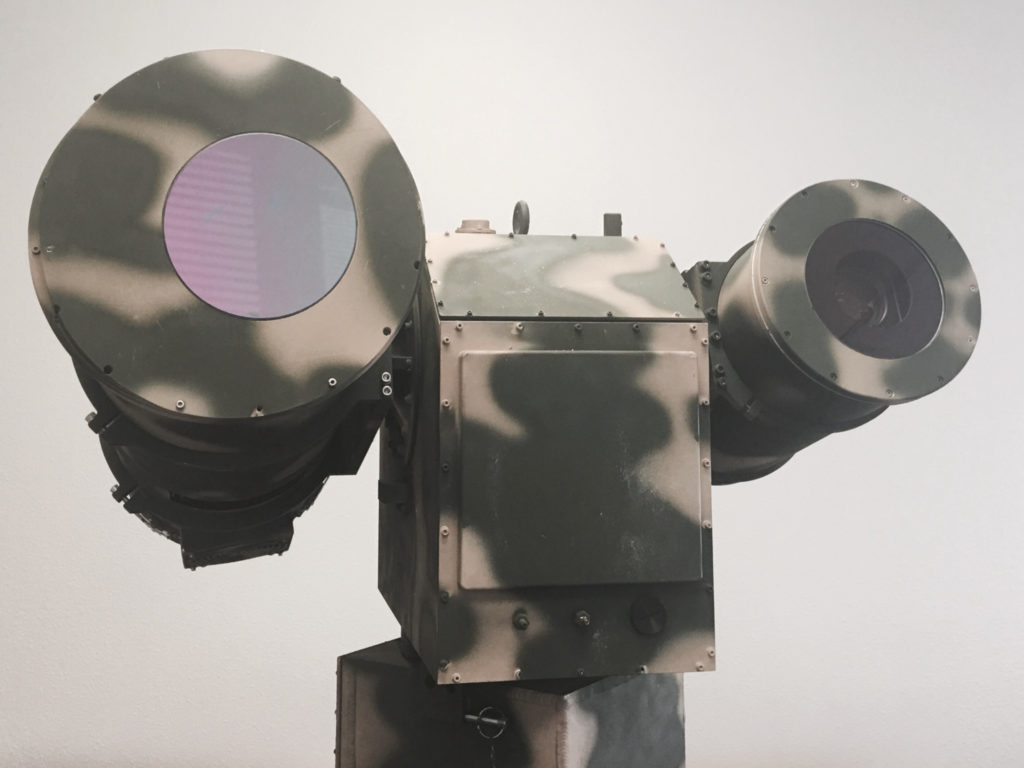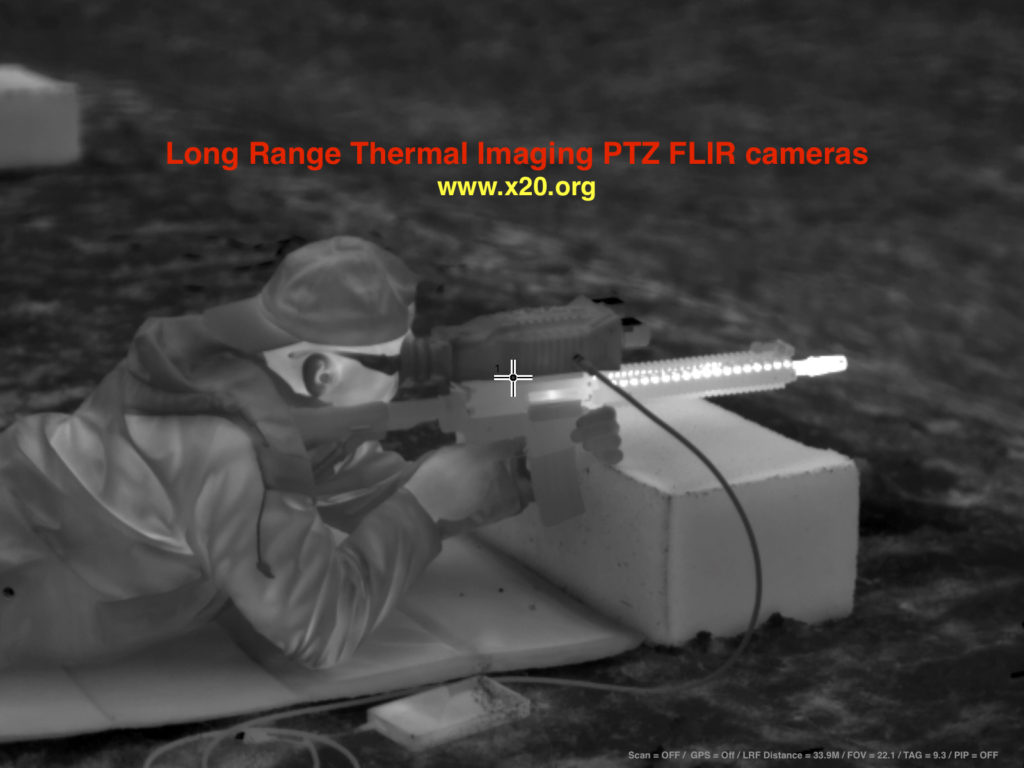Long Range FLIR PTZ Pan Tilt Zoom Thermal Security Surveillance Cameras
SPI UTILIZES THE HIGHEST QUALITY CURRENT TOP GRADE MILITARY LONG RANGE PTZ FLIR THERMAL IMAGING CAMERA SENSORS WHICH OFFER THE HIGHEST SENSITIVITY AND GREATEST IMAGE DETAIL WHICH RESULTS IN BETTER DETECTION, RECOGNITION & IDENTIFICATION OF LONG RANGE TARGETS
SPI offers a robust selection of Multiple Heavy Duty Long Range Pan Tilt Zoom PTZ FLIR thermal imaging cameras for HD Day and night vision surveillance imaging in military, border, shoreline and coastal security applications. Our All Weather IP68+ Platforms are submersible & offer the best reliability and performance of any long range FLIR thermal imaging system available anywhere.
SPI Corp has a wide variety of fully customizable long range FLIR PTZ (Pan Tilt Zoom) thermal imaging surveillance gimbal cameras that offer maximum performance, continuous 360° thermal security footage, and rugged weatherized housing built to withstand harsh environments. Whether you need a FLIR PTZ thermal surveillance camera to mount on a UAV/UAS drone for firefighting or security, or a fixed mount long range thermal surveillance system for vehicles, vessels or perimeter security, we have a configuration perfect for your mission. Our cameras are suited for border patrol, law enforcement, crowd control and thermal security 24/7 any time of day or night, in any environment. Our Uncooled LWIR longwave 8-12 micron PT (Pan Tilt) thermal cameras offer fixed and continuous zoom germanium optical lenses, our MWIR cooled midwave (medium wave 3-5 micron) system offer ultra extreme long telephoto zoom detection ranges. Our gimbals and turrets are the absolute strongest and most reliable in the industry and out long cooled life have been known to exceed 50,000 hours. Additional sensors that are supported on our PT thermal systems such as LLL cameras, CCD, Cmos, Nocturn, Color night vision BSTFA, Intensified night vision cameras, GPS, DMC (Digitally Magnetic Compass), LRF (Laser Range Finder), SWIR (Short wave IR Infrared), IR Infrared Laser Pointers, illuminators, designators, as well as shot detection, uav/uas/drone detection are a few add on complimentary items that can be incorporated into our systems. Radar Slew to cue and Slew to alert is available to couple and integrate radar to the thermal flir cameras, mast mounted, vehicle, tripod, mobile, vehicle, boat, UGV, UAS, UAV mounting provision are just a few area we can mount our system onto.
Our steerable positioner PT Pan Tilt turret gimbal systems have many levels of image stabilization to keep the imagery rock steady while on the move or while viewing extreme long range telephoto zoom targets, multi axis gyro stabilization with mechanical, mems and electronic EIS methods. Our stabilization is achieved throughout the entire PT system and within the sensors themselves. A plethora of communication protocols and management software allows for GUI detection/alarming/alerting interfacing, as well as IP, ONVIF, fiber, COFDM, gig-e (gig Ethernet) wireless, remote, microwave, ethernet and local command and control data streams.
Contact us today for your custom options, availability & pricing on our PT Flir thermal imaging cameras.
Product Search


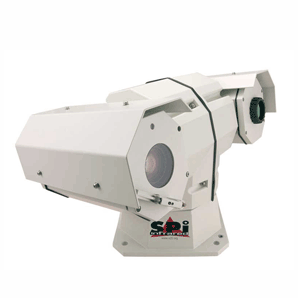

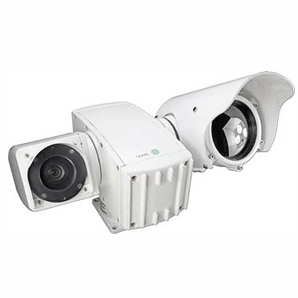

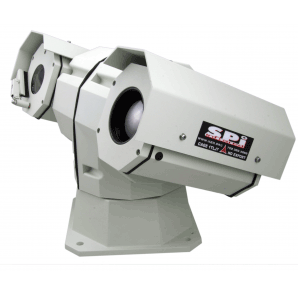

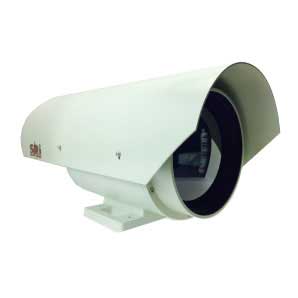




Example of M9 Long Range MWIR Cooled Ptz Thermal FLIR camera system with long range cctv Visable camera and additional Sensor Payloads, CLICK FOR ADDITIONAL INFORMATION
CLICK Here for the NEW M9 Ultra Long Range Cooled MWIR PTZ Thermal/EOIR CCTV Laser Range
Finder LRF Camera System with Impressive 60 Kilometer Detection Ranges
M11 Ultra Long range High Definition High Reliability PTZ FLIR Border Patrol, protection, security and surveillance thermal imaging camera
Long range PTZ FLIR Thermal imaging camera CCTV Detection/Recognition and Identification & Optics Data
PTZ (Pan Tilt Zoom) Thermal FLIR imaging camera system are an incredible technology that aids in imaging and has stellar properties for day and night vision scenarios. These systems are generally mounted on aerial/airborne vehicles, uav/uas/drones as well as tripods, masts, ground based vehicles, trucks and marine boats and vessels. Often, the first question that people interested in buying a FLIR PTZ (pantilt zoom) thermal imaging camera ask is “How far can I see?” This is a very reasonable question to ask, but it defies any simple answer. All FLIR PTZ thermal imaging cameras are able to see the sun which is more than 146 million kilometers away from Earth.
Thermal FLIR imaging is a technology that enables detection of people and objects in total darkness and in very diverse weather conditions. A typical application for thermal imaging is border security, where most threats occur at night. Watchtowers spaced at 4km intervals or more have to be able to detect threats at ranges up to 2km or more to guarantee full coverage of the border. Knowing how far you can see with a thermal imaging camera and at which distance you can detect a possible threat is of the utmost importance.
The distance you can see a given target with a Pan Tilt Zoom thermal imaging camera is called the “range” in the thermal imaging industry. To correctly determine the range of a thermal imaging camera requires some sophisticated modeling. There are many variables to consider including the type of thermal FLIR PTZ imaging camera you are using, the type of lens you are using, the nature and size of the object you want to detect, the atmospheric conditions and the very definition of what it means to “see” a target.
To define what is meant by “seeing a target”, the so-called Johnson’s criteria can be used. John Johnson, a Night Vision & Electronic Sensors Directorate scientist, developed criteria that relate to the effective range of infrared cameras. Although developed for the military (hence the use of the term “target” to refer to the object of interest), the Johnson criteria are widely used in the commercial marketplace to characterize thermal imaging systems. According to these criteria a distinction needs to be made between degrees of “seeing” a target: (DRI) is short for Detection Recognition and Identification in the world of imaging optics
In order to detect if an object is present or not, its critical dimension needs to be covered by 1.5 or more pixels. 1.5 pixels in a staring array is equivalent to 0.75 “cycles”, which is the unit of system resolution originally used in Johnson’s definition.
Recognizing an object is defined as seeing what type of object it is. It means being able to make the distinction between a person, a car, a truck or any other object. In order to recognize an object it needs to be subtended by at least 6 pixels across its critical dimension
This term is often used in the military sense of the word, which means seeing if someone is “friend or foe”. In order to do this, the critical dimension of the object in question needs to be subtended by at least 12 pixels.These Johnson’s criteria give a 50% probability of an observer discriminating an object to the specified level. For example, an adult human being is roughly 1.8m by 0.5m in size. The “critical dimension” of this man is 0.75m, according to empirical fits to the statistical analysis of observers and thermal image data. Consider an infrared camera system which has sufficient resolution such that 6 pixels in the image correspond to a target critical dimension of 0.75 meters at 1000 meters range. Furthermore, let us suppose that the camera sensor receives sufficient thermal contrast between the target and the background, i.e. a person against a cool nighttime landscape. Then the system has a reasonable probability of recognition at 1000m range.How Far you can see with a Flir thermal imaging pan tilt zoom camera by specifying at which distance a PTZ thermal imaging system can detect a man-sized target in conditions that yield sufficient thermal contrast. Depending on the lens size, our infrared camera systems can detect human activity up to several kilometers away. As the object that needs to be detected increases in size, the maximum detection range also increases.
A critical parameter that affects how far one can see with a thermal imaging camera is the focal length of the lens. Steerable Thermal FLIR Imaging PT pan tilt gimbaled turret cameras use exotic Germanium zoom telephoto lenses that are generally rated at F1 to F1.5 in the uncooled LWIR realm and F4 to F5.5 in the cooled MWIR realm, The focal length determines the instantaneous field of view (IFoV) of a camera system. This is the angular field of view of a single pixel â the smallest angle that can be resolved by the system, provided that there is sufficient thermal contrast.The IFoV then determines the distance at which a target’s critical dimension subtends the required number of pixels to achieve detection, recognition or identification. The longer the focal length of the lens, the smaller the IFoV becomes, which translates into more pixels across a target at a fixed range. Long-range security applications such as border security require quite small IFoVs, because the imaging systems have to detect objects the size of a man at a distance of several kilometers away. It should also be noted that the total field of view scales inversely with focal length – long lenses give small fields of view. This is the compromise: long lenses on cameras trade longer range detection for reduced total field of view. In other words, you can identify targets, but you need to know where to look for them in the scene, since the system is essentially looking through a soda straw! As a result, infrared camera systems often have multiple focal length lenses to enable rapid target detection with subsequent identification when the system zooms in.
Consider a man at a range of 1km. The effective angle that he subtends is the critical dimension divided by the range, which is 0.75m/1000m or 750 microradians in angle. In order to properly identify the man at this range with a thermal imaging FLIR IR night vision camera, we need a system that gives us 12 pixels across 0.75 meters at 1000m. Note that in this context identification does not mean identifying a particular individual, but rather making the distinction between a man holding a rifle from a man holding a shovel, for example. A 500mm focal length lens combined with a camera sensor with 15 micron pixels gives an IFoV of 30 microradians. The number of pixels on target is equal to the target angle divided by the IFoV angle. Therefore, we will have 750 microradians divided by 30 microradians per pixel, or approximately 25 pixels on target â exceeding the 12 pixel requirement for identification.
There is also a difference between how far you can see with a cooled and with an uncooled thermal imaging camera. Cooled PTZ camera systems are more expensive, but generally have a longer range than uncooled systems under many conditions. A typical cooled MWIR PTZ medium wave or (midwave) camera has a 15 micron pixel pitch (spacing between pixel centers). A 500mm lens on this camera gives an IFoV of 30 microradians. Using the 0.75m critical dimension, a man will subtend 12 pixels at a range of 2.1km. The conclusion to be drawn from this example calculation is that identification of a man at multi-km ranges requires a lens in the 500mm focal length range. Now take the case of an uncooled LWIR long wave PTZ thermal imaging camera system, which has less sensitivity than a cooled sensor with comparable optics and bigger pixels. A typical uncooled sensor has 38 micron pitch. This increased pixel size shortens the 500mm lens identification range to 0.8km. But more importantly, uncooled lenses in the 500mm focal length range are simply impractical because the lenses have to have very low f/numbers in order to have thermal sensitivities comparable to cooled camera systems. A 500mm uncooled lens with f/1.6 has an objective diameter of 313mm, which is enormous and very expensive. The lenses can be so expensive that they negate much of the cost saving gained from using uncooled sensors over cooled ones. In fact, at this time the longest existing commercial uncooled lens is 367mm long. A 367mm lens combined with a 38 micron pitch uncooled camera gives a maximum identification range of only 600m.The conclusion from this example is that extremely long range thermal imaging applications are best served by cooled camera systems. This is particularly true in the midwave band in humid atmospheric conditions.
Although thermal imaging cameras can see through total darkness, light fog, light rain and snow, the distance they can see is affected by these atmospheric conditions. Even in clear skies, inherent atmospheric absorption places limits on how far a particular infrared camera system can see. In essence, the farther an infrared signal must travel from the target to the camera, the more of that signal is lost along the way.
Update recent advances in long range longwave thermal infrared Germainium lenses has enabled our PTZ systems of LWIR uncooled variant to match up 12 µm and 17 µm advanced longwave detectors with lenses that continuously zoom in offer very impressive detection identification and recognition characteristics our pan Tilt zoom 355 mm and 425 mm lenses allow for human detection at 10 kilometers.
Rain and fog can limit the range of thermal imaging systems due to scattering of light off of droplets of water. Fog is a visible aggregate of minute water droplets suspended in the atmosphere at or near the surface of the earth, reducing horizontal visibility to less than 1km in many cases. It is created when the air temperature and the dew point of the air are nearly equal and sufficient condensation nuclei are present. Although thermal imaging has unique capabilities of cutting through some obscurants, smoke, fog, haze and clutter.
There are different types of fog, and some fogbanks are denser than others because the water droplets have grown bigger through accretion. A pan tilt PTZ thermal FLIR imaging camera will have more difficulty seeing through these dense types of fog, and its range will be reduced. The same goes for heavy rainfall and snow. Additionally, rain can reduce contrast because it will cool the surfaces of targets. Despite degraded performance in fog, rain and snow, thermal imaging cameras will still allow operators to see targets further than is possible with visible-light cctv CCD CMOS LLL ICCD imaging systems.
In summary, there is no easy answer to the question “how far can I see with a thermal imaging camera?” It depends on a large number of environmental and system variables, including the nature of the target (parked vehicle versus running vehicle), the background (hot desert versus cold snow), and atmospheric conditions (clear skies versus fog). It also depends on the specific camera and lens combination you choose.

